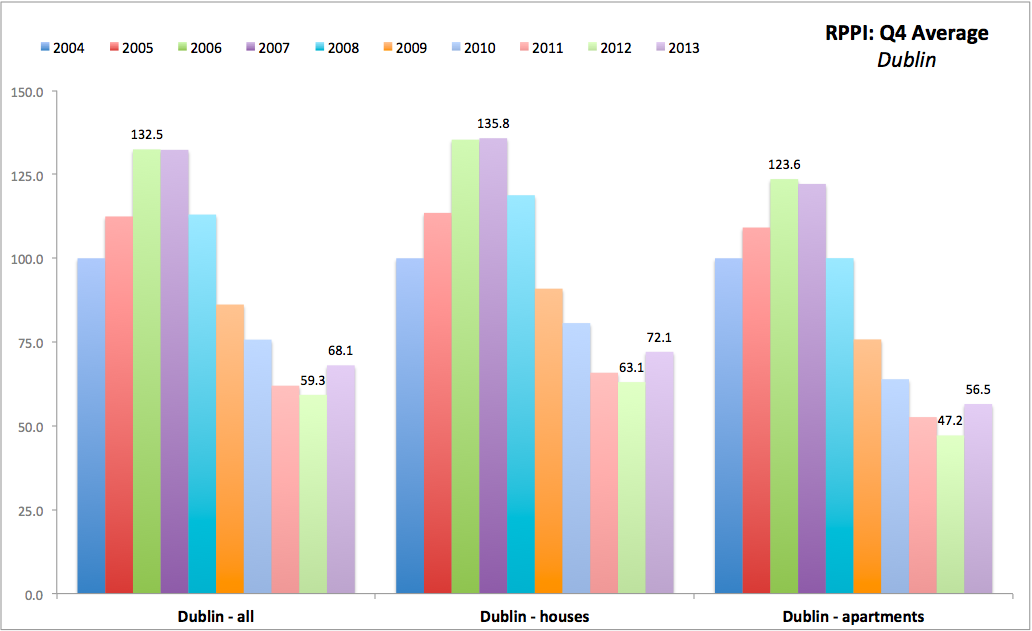Ireland's external balance performance has always been a major point for departure in analysis of our economic growth, sustainability of our debt and overall consideration of our economic infrastructure quality. As a Small Open economy, Ireland is trade-intensive. As an MNCs-led economy, Ireland is even more trade-dependent, in so far as we need larger external surplus to deliver same jobs creation as other European economies with smaller MNCs-induced GDP/GNP gap.
Since the start of the crisis, Irish current account performance was invariably brought forward as evidence of significant improvements in the underlying economy's competitiveness. And our gains were pretty strong - judging by this metric:
- In the 1990s, Ireland averaged current account surpluses of 1.85% of GDP annually
- In the 20002, we run current account deficits averaging -2.29% GDP per annnum
- Since 2010 through 2013 we have been running current account surpluses averaging 3.35% per annum
- The swing - from the deficit to surplus is 5.43% of GDP for Ireland - seemingly strong stuff.
The question is, of course, are the above numbers really strong, as in exceptionally strong or very strong as judged by comparison with other similar economies?
Let's consider EEA24 - 24 advanced economies of EEA community (excluding those economies of EEA that are not making it into 'advanced economies' club).
- In 1990-1999 Ireland's performance was strong in terms of the current account, but it was not exceptions - we ranked 5th in the EEA24 in the size of average current account surplus, behind Belgium (4.67% of GDP), Luxembourg (10.52% of GDP), the Netherlands (4.16% of GDP), and Switzerland (6.93% of GDP).
- In 2000-2009 we ranked 14th (no need to list the countries we were behind in this metric during this period - we were doing badly).
- In 2010-2013 we ranked 7th - behind Denmark (6.09%), Germany (7.05%), Luxembourg (6.91%), the Netherlands (9.17%), Sweden (6.08%) and Switzerland (10.74%).
Here's a chart illustrating this performance - for legibility, I only left in the chart Small Open Economies.
But what about the overall period of the crisis, you might ask?
Instead of decades-averages, let's take a look at the average current account balances over 2008-2013 period. Here we rank 8th in the EEA24 with our current account surplus averaging 5.4% of GDP.
The key point here is that Ireland's current account performance has been strong, but it has not been exceptional. Certainly not exceptional given the need of this economy for deleveraging (and associated requirement for higher current account surpluses).
The good news is that at 5.4% of GDP, our current account surpluses since 2008 are above those in the deleveraging period of 1992-1997 when these averaged 3.13% of GDP.
The bad news is that we are still to undo the aggressive current account leveraging accumulated during the 2000s. In the decade of 2000s, Ireland's cumulated current account deficit amounted to USD52.42 billion. During the 1990s our cumulated surplus was USD12.49billion and in 2010-2013 our cumulated surplus was USD28.88 billion. In other words, from 1990 through 2013 we are still in a deficit of USD11.04 billion and if we take 2000 as the starting point, our cumulated deficit is USD23.54 billion.
For comparison, Switzerland's cumulated 2000-2013 surplus is USD644.86 billion, Sweden's USD377.99 billion, Denmark's 149.18 billion.
In fact, non-euro EEA24 members are in a vastly stronger current account position than their euro area counterparts, but that is probably a matter best covered separately, although it does probably explain why euro area needs ESM and other means for borrowing externally.
Lastly, however, let's come back to that 'swing' in our current account from deficits in the 2000s to surplus in 2010-2013. Remember, the swing was a sizeable 5.64% of GDP. But it only ranks us as 5th economy in the EEA24 in terms of the magnitude of improvement in our competitiveness. Not exactly an 'exceptional case' either.























